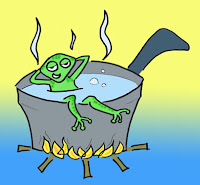In order to predict 2012 Google Algorithm changes we need to first look at 2011. Starting from January 2011, Google started making algorithm updates to help weed out poor quality and duplicated content, scrapers and spammy websites.
Some big players such as overstock.com and JC Penney were hit with penalties in January and February respectively. The (content) Attribution Update at the end of January affected 2% of search queries. This gave us a very solid clue on what Google was going to be focusing on in 2011 – content.
Content
We’ve always known content is king, even before all the 2011 algorithm updates, Google has always favoured websites with vast amounts of content.
When you type a search query into Google, you are not looking for WebPages full of keywords or rehashed articles, you are looking for unique and useful information on your subject. Google knows this. They are always trying to provide you with better results – not an easy task by any measure. The best way to make these improvements is through search algorithm updates.
With all these recent changes, Google is trying to put more emphasis on good content; not just a lot of content – but a lot of well written, unique content. It’s not often I find myself doing this, but I actually agree with Google on this one. Content farming and scrapers represented the dark side of the internet, the sooner they are gone, the better. To combat this Google has named this set of algorithm changes Panda.
Panda
2011 for the Google algorithm was the year of the Panda. We saw no fewer than 11 Panda updates. During January a few algorithm updates were released to give clues as what 2011 will be about, it wasn’t until February we saw the first Panda update – affecting 12% of all search results. It cracked down on content farms, poor quality content, and high ad-to-content ratio websites. The effects weren’t instant either, only coming to Europe in April.
- Panda 1.0 – Feb 23, 2011 – Initial panda algorithm release, affecting 12% of search results.
- Panda 2.0 – Apr 11, 2011 – Rolled out to English search queries worldwide, integration of new signals.
- Panda 2.1 – May 9, 2011 – Minor changed not discussed by Google.
- Panda 2.2 – Jun 21, 2011 – Continued updates to Panda algorithm, updates were separate from main index and not in real-time
- Panda 2.3 – Jul 23, 2011 – Minor update to the Panda ranking factors.
- Panda 2.4 – Aug 12, 2011 – Rolled out to non-English search queries. 6-9% of sites affected in new countries.
- Panda 2.5 – Sep 28, 2011 – Changes unclear, huge ranking losses reported on some sites.
Minor panda updates affecting roughly 2% of search queries.
- Minor Panda updates – Oct 5, 2011
- Minor Panda updates – Oct 3, 2011
- Minor Panda updates – Oct 13, 2011
- Minor Panda updates – Nov 18, 2011
I don’t see panda as another update to the main algorithm, rather a branch on its own, I can certainly see more updates to Panda in 2012, content will always be important and this is what Panda is all about.
Whether we like it or not, as SEOs we will never know exactly what Google will do next, but we can prepare. So here are some things to watch out for and prepare your website in anticipation of 2012.
2012
2012, in my opinion, will see a decent proportion of Google’s updates refining the Panda update. Google is putting more and more emphasis on brands, with bigger brands getting more favourable results. Especially after the Panda updates – with similar content, we saw rankings drop for smaller brands (the review centre), while big brands remain untouched (trip advisor).
Here are a few things you can do to prepare your websites for 2012 algorithm updates.
- Work on your brand, this is going to be big – in 2012, if it’s not going to be more content updates for Panda algorithm its going to be brand. Brand has been talked about for a while now, but the panda update really put an emphasis on this. Work on your own brand and Google will love you.
- Review your website for duplicate and poor content – it’s not too late. Remove the large amounts of poor content you created to take advantage of Google before the Panda update. Replace them with quality pieces that are unique, helpful and engaging. More Panda will follow in 2012 to see how good you’ve been.
- Engage socially – in 2010 everyone was talking about how social is going to affect SEO in 2011, who knew content was going to be the main focus? However, Social is not going anywhere, if not next year it will be the year after. Start early to avoid disappointment later.
- Quality over quantity for links – An old one, but a good one. Google will eventually crack down the back link game, the first ones to go will be those with spammy back links and sites with enormous back links to referring domain ratios. Go after a few quality links and spend more time acquiring them.
- Kept yourself up to date – Last but least, keep yourself up to date from the official source. Two websites you need to add to your RSS feeds or visit regularly are from Google themselves, the Inside Search Blog and Official Google Blog. The more you know, the better position you will be in to make changes.
Source: Google Algorithm Predictions in 2012 – Prepare your Website










